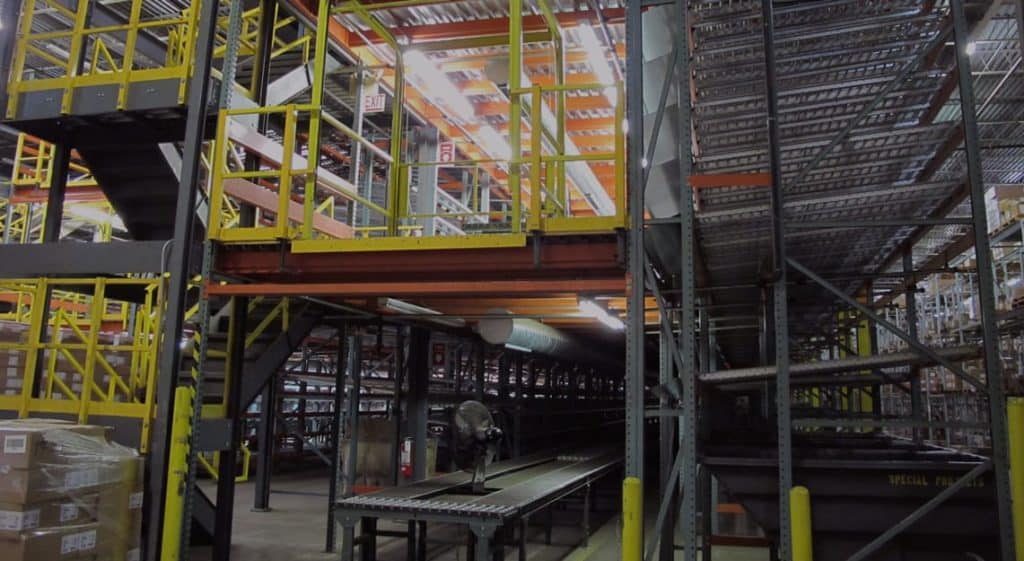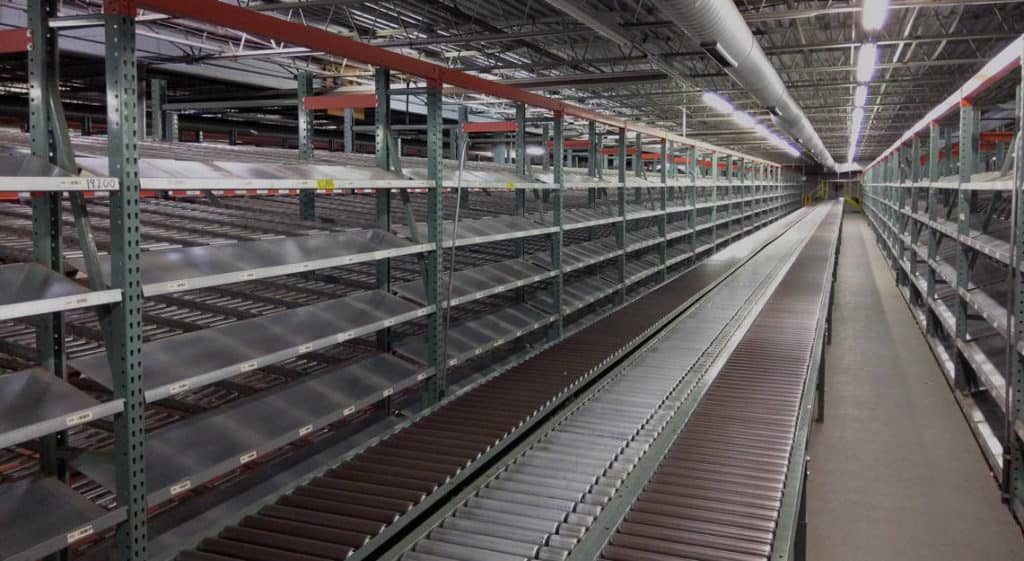How to Design a Pick Module
Pick modules are the strategic implementation of multiple elements of storage equipment — they’re not just shelving and racks. These complex systems maximize your warehouse space and enhance order picking efficiency. Pick modules can be simple pick tunnels to elaborate multi-level structures and everything in between.
So, what should you know about pick module design? What are the elements of a pick module system? We’ve got all that information and more. Just read on!
Elements of a Pick Module System
The goal of a pick module system is to increase efficiency in picking operations and order flow. To accomplish this goal, pick modules utilize different pallet and carton flow racking alongside storage rack systems and other warehouse technologies. Some designs can include the following:
- Pallet flow rack
- Carton flow rack
- Selective pallet racks
- Other storage methods
- Conveyors
Pallet racking is usually the main structural support for pick module systems, with flooring resting on cross-aisle beams. You can design aisles to meet specific requirements, including worker needs, conveyor placement or accommodating nearby working platforms. The floor surface itself can be several different materials:
- Bar grate
- Steel plank
- Plywood
- Resin decking
Multi-level systems will need additional design elements, such as hand railings and stairs. These components may require an additional structure for support, so keep that in mind. A well-designed pick module system will combine different storage mediums and technologies to maximize warehouse space and enhance picking performance.

What are Some Common Pick Module Designs?
Pick modules are often custom-built to meet specific facility needs and requirements. So, unfortunately, you won’t easily find a one-size-fits-all solution to pick module design. Even so, you can use some popular configurations as the foundation for your design:
- Full case picking — In this design, workers will move through the pick module using either a pallet jack or a cart. Here, they can pick directly from full pallets or cases. Forklifts will replenish racks. This configuration optimizes floor space and labor requirements.
- Catwalk mezzanine — Great for small orders and limited inventory, this design places the pick module directly on top of racking. A forklift will replenish the upper levels, but workers will need to break down pallets and hand-stack on racking or shelving.
- Mechanized pick module — Designs using mechanized equipment like conveyors are configurable in many different ways. Conveyors alleviate the need for walking, which is a significant time drain on operations.
- Broken case pick module — In this configuration, workers unpack pallets and load them onto carton flow racks toward the picking aisle. This design works well with high-pick-volume environments and facilities with a variety of products.
These are just a few examples of pick module designs. Before making any decisions, you’ll want to consider other operational and design factors.
Operational and Design Factors to Consider
If you approach the design process strategically, you can construct a pick module that helps your warehouse increase efficiency and productivity. Here are a few considerations that take into account operational use and design factors to help you get an idea of what you might need.

We Are Here to Help Your Team Design the Perfect Pick Module System
Our team can assist at every stage of the process, from project management to installation. CONTACT US
Picking Volume, Conveying and Replenishment
When designing a pick module, one of the most important factors to consider is picking volume. This can give you some clues as to the overall layout of your pick module. Consider how your facility operates during times of accelerated demand. What is the usual response?
If your plan involves adding more pickers to increase speed, it could mean tight spaces and operational bottlenecks. Establishing a design to accommodate this situation might mean adding aisles and workstations large enough for the extra staff. Additionally, you’ll need to take into account the walking distance between picking locations.
If your team is consistently working with a high number of products and SKUs, designing your pick module to accommodate strategies like zone picking may alleviate this drain on efficiency. Just remember — the more strategies you implement, the more complex the pick module system.
When designing a pick module, one of the most important factors to consider is picking volume.
Much like the problem with walking distance, you’ll need to consider how the orders move from the pick module to the shipping area. While workers can do this by foot or cart, a gravity or power conveyor can eliminate wasted time walking, keep aisles clear and help workers focus on picking.
Lastly, you’ll need to consider how you’ll restock the product in your pick module. This is a key factor to keep fulfillment speed at optimal levels. Usually, replenishment happens with forklifts, so considerations for aisle size and safety should be on your mind. Again, the goal is to limit walking distance for workers and limit re-stacking. Carton flow or pallet flow rack can be useful here, too.

Design Factors
When choosing your pick module, you’ll want to always consider that building codes will set many of the dimensions of your design. Local requirements can vary, but here are a few of the main design considerations:
- Means of egress — Means of egress standards are requirements in place to ensure worker safety in the event of an emergency. Building codes will specify how long the means of egress need to be safe.
- Head clearance — The appropriate level of head clearance can vary for different designs and uses. You’ll need to factor in an allowance for certain objects and other features like lighting and fire suppression systems.
- Staircases — Considerations for staircases are quite important and require some careful planning. Building codes will usually specify width, rail height, landings and step dimensions.
At the end of the day, you’ll need to work closely with your pick module designer to ensure that you meet all your needs, your structure will be up to code and your workers will be safe.
Designing a Pick Module for Your Facility?
Pick modules don’t come ready to go out of the box. These systems consist of multiple storage design elements and need to closely match your facility’s needs to be effective. In almost every situation, you’ll want to work with a professional design team.
At East Coast Storage Equipment, our team of qualified storage professionals has been helping with facility design and pick module installations for years and years. We source high-quality systems and can confidently meet any demands for storage, pick efficiency and warehouse layout limitations. If you’re ready to start designing your pick module system, reach out today.